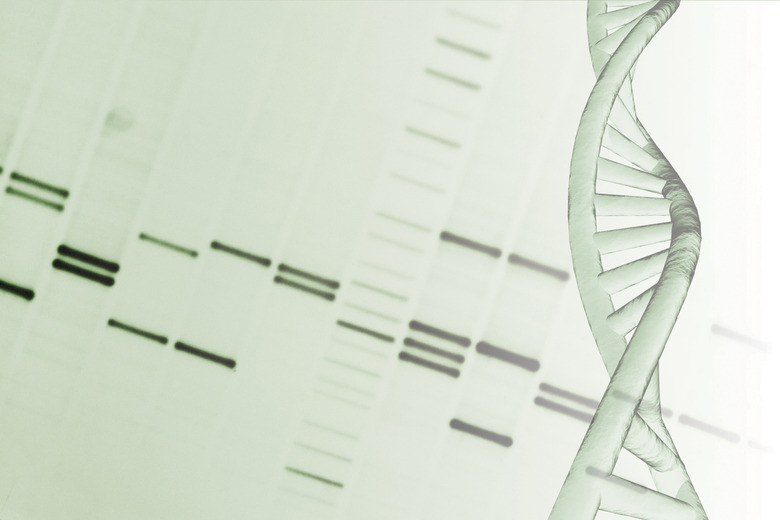Biochemistry Blotting Techniques
Biochemistry studies molecules such as DNA, RNA and proteins. Blotting techniques are what scientists use to separate these types of molecules. In cells, they exist as a mixture. Blotting allows researchers to find one protein among many, like a needle in a haystack. Blotting is generally done by letting a mixture of DNA, RNA or protein flow through a slab of gel. This gel allows small molecules to move faster than bigger ones. The separated molecules are then pressed against a membrane, which helps move the molecules from the gel onto the membrane. The molecules stick to the membrane, but stay in the same location, apart from each other, as if they were still in the gel.
Western Blot
Western Blot
Western blotting is a common technique for separating proteins by size, but in straight columns. These parallel columns allow researchers to compare the amount of a protein across different samples that are run right next to each other, like bowling lanes. For example, if you were testing the effect of different amounts of a drug on cell growth, you would treat four different groups of cells with a different amount of drug. Then you could break the cells open and run the proteins of each group in separate lanes on a gel. Spreading the proteins out in this way allows you to see what an increasing concentration of drugs does to a certain protein.
Northern Blot
Northern Blot
Northern blotting is used to detect RNA. Cells can be broken open to release their RNA. The RNA from different cell types can be run on separate lanes on a gel. The gel spreads the different RNA by size. These neat, parallel rows of RNA allow a researcher to compare which cell type has how much of which RNA. This method allows a researcher to determine if cells from a certain disease have more of this RNA or less of that RNA. Northern blotting may reveal how a disease is working at the level of RNA production.
Southern Blot
Southern Blot
Southern blotting is the original blotting technique, which started the naming system. It was invented by Edwin Southern. The Southern blot is used to detect the amount of DNA in a mixture. Just as with protein and RNA, the DNA of a cell can be released when that cell is broken open. Southern blotting separates DNA from different cell types by size. The DNA from each sample is spread into neat, parallel lanes. Individual pieces of DNA can be detected using a radioactive or fluorescent probe, which is designed to bind only to that piece of DNA. The energy signal from a radioactive probe, or the flashes of light from a fluorescent signal, tell researchers how much of that piece of DNA is in each sample.
Other Blots
Other Blots
The three main blotting techniques — Western, Northern and Southern — have been modified in different ways to detect slightly different molecules. The Western blot vs the Southern blot, for example. detects protein and DNA, respectively. Each modified technique is generally done the usual way, but uses a different method to detect the molecule that is being spread out into the parallel lanes. Southwestern blots detect molecules of protein stuck to DNA. Northwestern blots detect molecules of protein stuck to RNA. Farwestern blots detect molecules of protein stuck to other proteins.
Cite This Article
MLA
Ph.D., David H. Nguyen,. "Biochemistry Blotting Techniques" sciencing.com, https://www.sciencing.com/biochemistry-blotting-techniques-20171/. 25 July 2018.
APA
Ph.D., David H. Nguyen,. (2018, July 25). Biochemistry Blotting Techniques. sciencing.com. Retrieved from https://www.sciencing.com/biochemistry-blotting-techniques-20171/
Chicago
Ph.D., David H. Nguyen,. Biochemistry Blotting Techniques last modified August 30, 2022. https://www.sciencing.com/biochemistry-blotting-techniques-20171/
